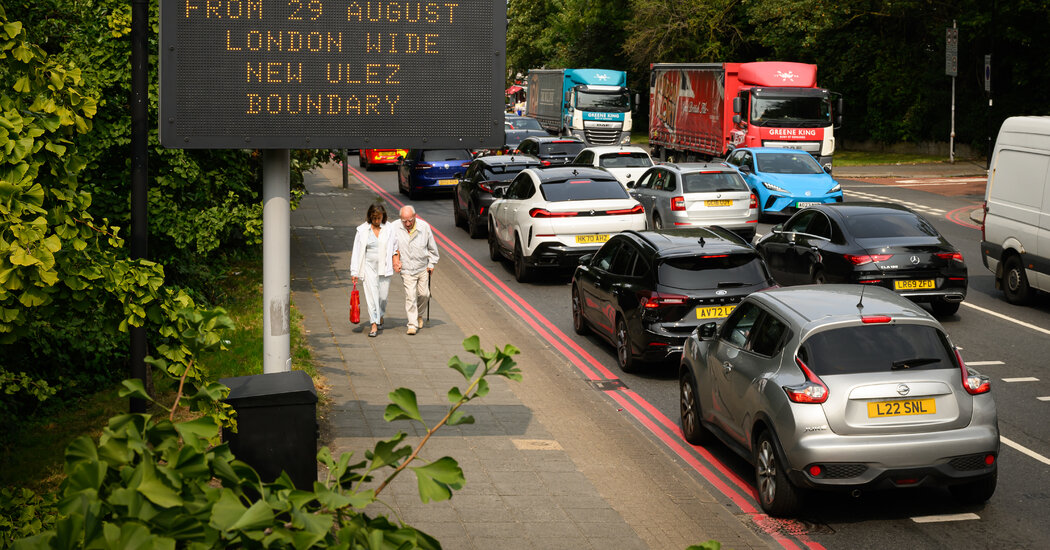The city’s expanded low-emissions zone, which was politically fraught, has cut emissions that contribute to health problems like asthma, new numbers show.
When pollution meets politics, efforts to clean up the air in the world’s big cities can bring risks as well as wins. London and New York got a taste of it this week.
London this week published data showing that the air is cleaner since its mayor, Sadiq Khan, made the politically contentious decision to expand fees on polluting cars and trucks driving into London. Two key ingredients of pollution responsible for worsening asthma and other ailments — particulate matter and nitrogen oxide — dropped significantly in the first six months after London had expanded what it calls its Ultra Low Emissions Zone, according to the new data
The data is part of Mr. Khan’s efforts to persuade motorists, particularly those in the suburbs, that the extra costs good for public health. The air is measurably cleaner in outer London, where opposition to the expansion was robust.
“The decision to expand the ULEZ was a difficult one, but the right one,” he said in a briefing with reporters, using the acronym for the low-emission zone.
New York’s congestion-pricing fight
It’s the first piece of evidence showing what congestion pricing, imposed on the whole of London, has done to pollution levels. As such, it could hold lessons for other politicians, including in New York, where the United States’ first congestion-pricing policy was shelved in June by Governor Kathy Hochul, just weeks before it was set to begin, during a crucial election year.
The governor’s troubles grew this week, with two lawsuits filed alleging that she exceeded her authority in pausing the pricing plan.
